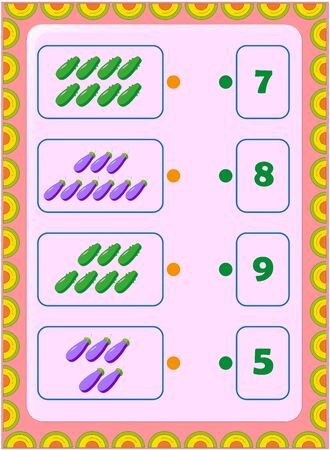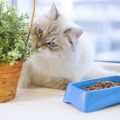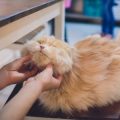Choosing the Wrong Enclosure Size
One of the most common mistakes exotic pet owners make in the United States is selecting an enclosure that’s either too small or, surprisingly, too large for their new companion. The size of your pet’s habitat directly affects its physical health, stress levels, and overall behavior. For instance, a cage that’s too cramped can restrict movement, stunt growth, and lead to aggression or self-harm. On the other hand, an enclosure that’s excessively large can overwhelm certain species—like smaller reptiles or amphibians—making it difficult for them to find food or feel secure.
Why Enclosure Size Matters
Animals have evolved to thrive in specific environments. Too little space prevents natural behaviors like climbing, burrowing, or swimming. However, some pets (such as tarantulas or small geckos) may become anxious if they cant easily locate hiding spots or food in a vast enclosure. The key is balance: providing enough room to mimic their native habitat while maintaining comfort and security.
Finding the Right Fit: Quick Reference Table
| Pet Type | Minimum Enclosure Size | Notes |
|---|---|---|
| Bearded Dragon | 40 gallon tank | Longer tanks preferred over taller ones for ground movement. |
| Crested Gecko | 20 gallon tall tank | Vertical space is important for climbing. |
| Corn Snake | 20-40 gallon tank | Larger adults need more horizontal space. |
| Tarantula | 5-10 gallon tank | Too much space increases stress; add hides. |
| African Grey Parrot | 36” x 24” x 48” cage minimum | Bigger is better, but always provide perches and toys. |
Tips for Choosing the Right Enclosure Size
- Research your pet’s natural habitat and mimic it as closely as possible.
- If in doubt, consult with a local exotic pet vet or experienced breeder familiar with American standards.
- Remember that young animals grow—plan for future adult size rather than current age.
- Add enrichment items like branches, hides, or platforms to make larger enclosures feel safe without feeling empty.
- Avoid “starter kits” unless they meet expert recommendations for size and setup.
Selecting the right enclosure size is the foundation of responsible exotic pet ownership. Making informed choices from the start helps prevent behavioral issues and health problems down the road.
2. Improper Temperature and Humidity Control
One of the most common mistakes in exotic pet enclosure setup is failing to provide the correct temperature and humidity levels for your specific pet species. Exotic pets, such as reptiles, amphibians, and certain birds or mammals, often come from unique environments that require precise climate control. If these needs are not met, it can lead to stress, illness, or even death.
Why Temperature and Humidity Matter
Maintaining species-specific temperature and humidity is crucial for your pet’s health. For example, many reptiles depend on external heat sources to regulate their body temperature (a process called thermoregulation), while amphibians may need consistently high humidity to prevent dehydration and skin issues.
Common Issues Due to Incorrect Climate Control
| Species Type | Common Problem | Ideal Range* |
|---|---|---|
| Bearded Dragon | Lethargy, poor appetite due to low temperatures | Temperature: 95-110°F (basking) |
| Crested Gecko | Shedding problems from low humidity | Humidity: 50-70% |
| Ball Python | Respiratory infections from excess humidity | Humidity: 50-60% |
*Always check care guides for your exact species’ needs.
Tips for Monitoring and Regulating Conditions
- Use digital thermometers and hygrometers in multiple areas of the enclosure.
- Create thermal gradients by placing heat lamps at one end and keeping the other cooler.
- Mist enclosures regularly or use automatic misting systems if high humidity is required.
- Avoid placing enclosures near windows or vents where external factors can alter internal conditions.
By understanding and controlling temperature and humidity according to your pet’s natural habitat, you help ensure their comfort and longevity. Regularly check equipment and environmental readings to avoid accidental fluctuations that could harm your exotic companion.

3. Overlooking Substrate and Furnishing Needs
One of the most common mistakes exotic pet owners make is underestimating the importance of proper substrate and enclosure furnishings. Using unsuitable bedding or failing to provide appropriate accessories can lead to both health and behavioral problems for pets such as reptiles, amphibians, and small mammals. For example, using wood shavings for certain reptiles may cause respiratory issues, while a lack of hiding spots can stress out animals that require privacy.
Why Substrate Matters
The right substrate not only provides comfort but also mimics the animal’s natural habitat, which is crucial for their well-being. Improper substrates may harbor bacteria, cause impaction if ingested, or create an unsuitable microclimate.
Common Substrate Mistakes and Better Alternatives
| Pet Type | Common Mistake | Better Alternative |
|---|---|---|
| Bearded Dragons | Loose sand (risk of impaction) | Reptile carpet or tile |
| Ball Pythons | Cedar/pine shavings (toxic oils) | Aspen shavings or coconut husk |
| Hermit Crabs | Gravel (difficult to burrow) | Coconut fiber mixed with play sand |
| Small Mammals (Hamsters, Mice) | Scented bedding (can irritate respiratory system) | Paper-based or aspen bedding |
The Role of Furnishings and Accessories
Lack of appropriate furnishings—such as hides, climbing branches, water bowls, or basking platforms—can cause anxiety, reduce activity levels, and even contribute to aggression or self-harm in some species. Enclosure accessories should be chosen based on your pets specific needs and natural behaviors.
Suggestions for Proper Setup
- Research your pet: Learn about their native environment and try to replicate it in captivity.
- Rotate furnishings: Change up accessories regularly to keep your pet engaged and mentally stimulated.
- Prioritize safety: Avoid sharp edges, small parts that could be swallowed, or materials that may leach chemicals.
- Create layers: Include items at different heights (branches, shelves) for climbing animals, and multiple hides for shy species.
- Monitor humidity and temperature: Use substrates and furnishings that help maintain the correct microclimate.
A thoughtful approach to substrate selection and enclosure furnishing not only prevents many common health issues but also enriches your exotic pet’s daily life. Always tailor your setup to the unique requirements of the species you keep for the best results.
4. Inadequate Lighting and UVB Provision
One of the most frequent mistakes in exotic pet enclosures is failing to provide proper lighting, especially sufficient UVB exposure for reptiles and amphibians. Many new keepers underestimate the vital role light plays in their pet’s health, leading to issues such as metabolic bone disease, poor appetite, and sluggish behavior. Understanding your pet’s specific requirements and providing the right spectrum and intensity of light is essential for their well-being.
Common Lighting Mistakes
- Using household bulbs instead of specialized reptile or exotic animal lights
- Positioning lights too far from basking areas, reducing effectiveness
- Ignoring the need for UVB supplementation for species that require it
- Leaving lights on for incorrect durations, disrupting natural day/night cycles
Choosing the Right Lighting Setup
Selecting appropriate lighting involves considering both the type (UVB/UVA) and strength (wattage, UV index) needed by your exotic pet species. Here’s a quick reference guide:
| Species Type | Recommended Lighting | UVB Requirement |
|---|---|---|
| Desert Reptiles (e.g., Bearded Dragons) | High-output UVB bulb (10-12%) | Essential |
| Tropical Reptiles (e.g., Chameleons) | Moderate-output UVB bulb (5-6%) | Essential |
| Nocturnal Reptiles (e.g., Leopard Geckos) | Low-level UVB or none; focus on heat gradient | Minimal/Optional* |
| Mammals (e.g., Sugar Gliders) | Daylight spectrum LED or fluorescent for visibility | Not Required |
*Some keepers find limited UVB beneficial even for nocturnal species—consult a vet or herpetology expert.
Proper Positioning and Maintenance
- Install UVB bulbs within 12–18 inches of basking spots unless manufacturer states otherwise
- Avoid placing glass or plastic between the bulb and enclosure as this blocks UVB rays
- Replace bulbs every 6–12 months even if they still emit visible light—UVB output diminishes over time
Pro Tip:
Create a lighting schedule using timers to mimic natural daylight hours, ensuring consistent circadian rhythms for your pets.
5. Neglecting Safety and Escape-Proofing
One of the most common yet overlooked mistakes in exotic pet enclosure setup is failing to secure the habitat properly. Poorly secured enclosures can lead to dangerous escapes and cause injuries to your pet or even harm people and other pets in your household. Many exotic species are surprisingly skilled at finding weak points, squeezing through small gaps, or manipulating loose lids and doors.
Risks Associated with Inadequate Security
| Risk | Description | Potential Consequences |
|---|---|---|
| Escape | Poorly latched doors, loose mesh, or small openings allow pets to get out. | Lost pets, stress, exposure to harmful environments. |
| Injury | Sharp edges, improper materials, or unsecured components can injure pets. | Cuts, broken limbs, infections. |
| Predator Entry | Weak enclosures can let other animals enter. | Pet becomes prey, fights, trauma. |
| Accidental Openings | Lids or doors not locked securely may be opened by children or other pets. | Escapes, potential harm to both pet and others. |
Practical Tips for Secure Habitats
- Choose Sturdy Materials: Use escape-proof materials like metal mesh for reptiles or high-quality acrylic for small mammals and birds.
- Double-Check Locks: Install reliable locking mechanisms on all doors and access points. Avoid simple latches that clever pets can open.
- Seal Gaps: Regularly inspect the enclosure for gaps or loose fittings that might allow an escape. Patch any weak spots immediately.
- Avoid Sharp Edges: Smooth out any sharp corners or exposed wires to prevent injury.
- Supervise Interactions: Keep the enclosure in a safe location away from curious children or other household pets who might try to open it.
- Test Escape Routes: Before introducing your pet, check every possible escape route by gently pressing on screens and seams.
When to Upgrade Your Enclosure Security?
If you notice signs of wear, damaged locks, or if your pet has managed an escape attempt, it’s time to upgrade your security measures. Remember, investing in a secure enclosure not only keeps your pet safe but also brings you peace of mind as a responsible exotic pet owner.
6. Ignoring Enclosure Cleanliness and Maintenance
One of the most common mistakes pet owners make with exotic animal enclosures is underestimating the importance of regular cleaning and maintenance. A dirty or poorly maintained enclosure can quickly become a breeding ground for bacteria, parasites, and mold, all of which can lead to serious health problems for your exotic pet. Maintaining cleanliness is not just about aesthetics; it directly impacts your pet’s wellbeing and longevity.
Why Regular Cleaning Matters
Exotic pets, such as reptiles, birds, or small mammals, are especially sensitive to changes in their environment. Waste buildup can release harmful ammonia, increase humidity, and attract pests. Consistent cleaning routines help prevent diseases like respiratory infections, skin issues, and parasitic infestations. Healthy pets are more active, have better appetites, and display their natural behaviors more freely.
Recommended Cleaning Schedule
| Task | Frequency |
|---|---|
| Spot clean waste and uneaten food | Daily |
| Replace water and clean bowls | Daily |
| Wipe down surfaces (glass, plastic) | Weekly |
| Change substrate/bedding | Bi-weekly or as needed |
| Deep clean entire enclosure (remove everything, disinfect) | Monthly |
Tips for Safe Cleaning
- Use pet-safe cleaning products—avoid harsh chemicals like bleach unless thoroughly rinsed.
- Wear gloves to protect yourself from bacteria or allergens.
- Ensure all items are dry before placing them back in the enclosure to prevent mold growth.
A proactive approach to cleaning and maintenance not only keeps your exotic pet healthy but also makes their habitat more enjoyable for both you and your animal companion. By sticking to a routine and addressing messes promptly, you significantly reduce health risks and ensure a happy life for your pet.


